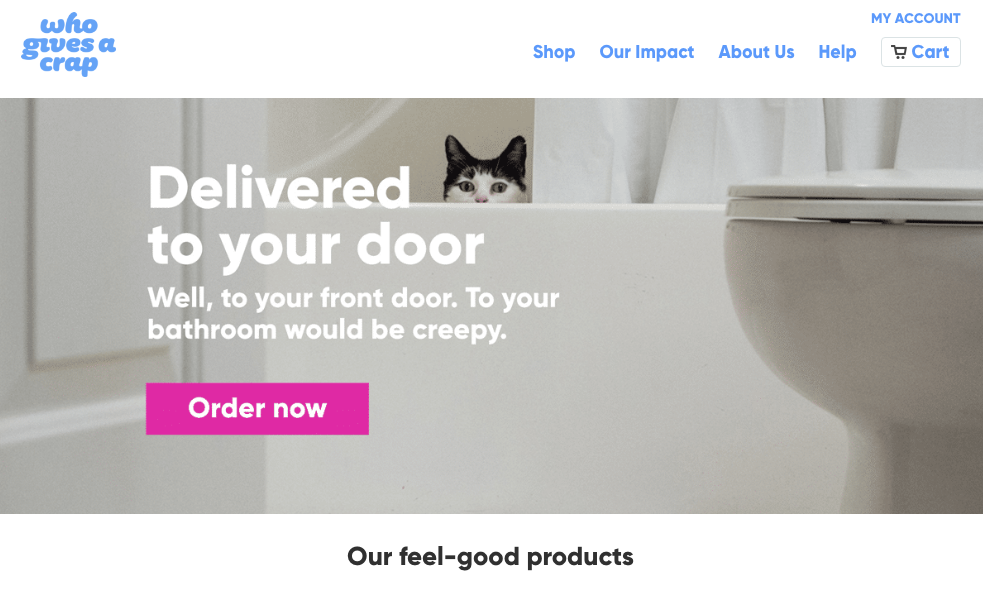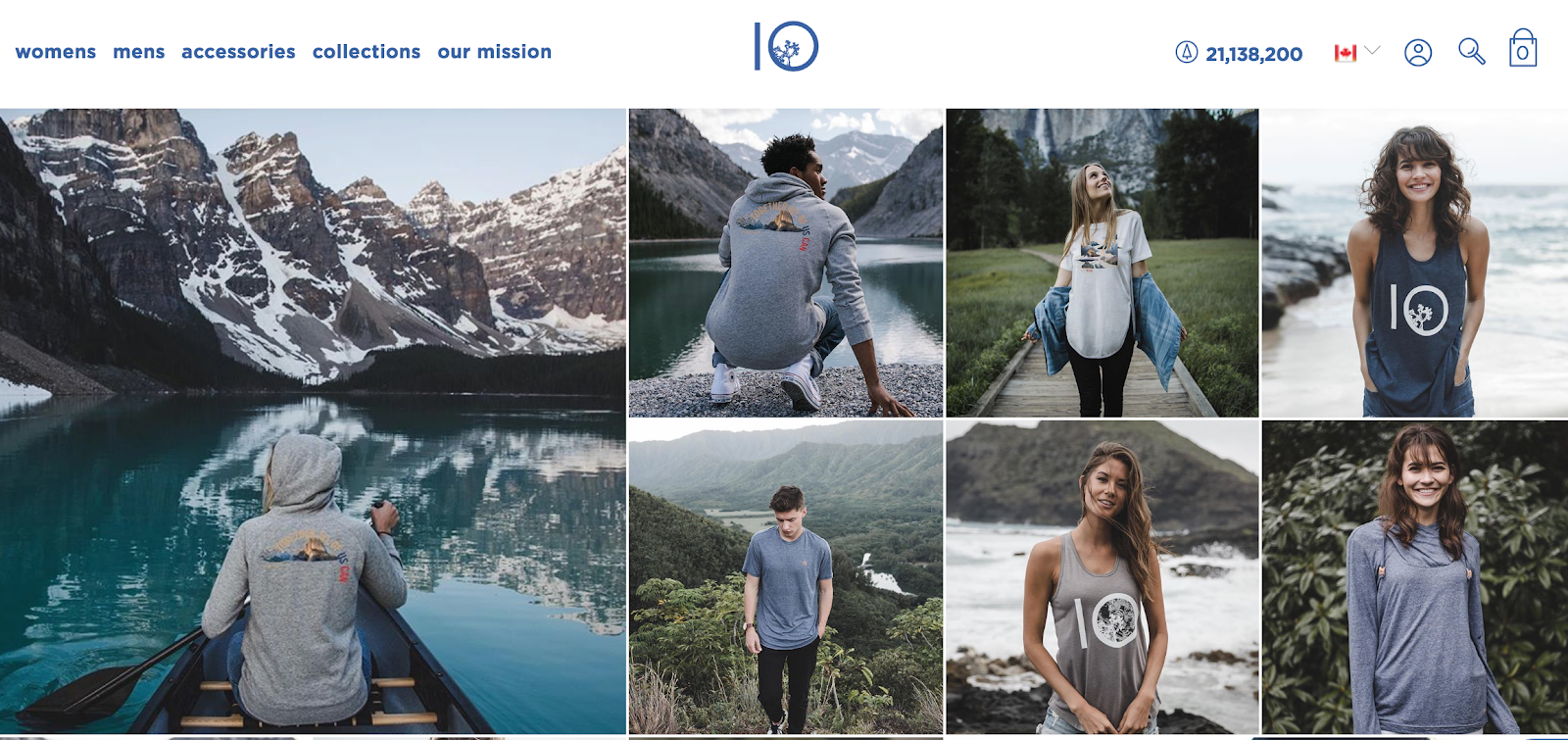Build Your Business
Branding is more than design: How pursuing brand clarity pays off
Leverage branding to galvanize movements, inspire action, and connect people to something bigger than themselves.
August 14, 2018
Branding doesn’t always feel like a top priority for change-makers. It doesn’t necessarily translate directly into impact or sales in the same way that providing a product or service can.
However, the value of branding goes a lot deeper than the design of a website or business card. When done well, branding can create the foundation of what ‘makes you, you’ and it can be a powerful asset for achieving your impact goals.
If you jump into branding without much thought or consideration, you may end up with a brand that is misaligned or doesn't feel like you. Poor branding sends your organization into the realm of vague and forgettable, or worse, it leads to a confused team and customers.
When you go through a thoughtful branding process, your company or organization can emerge with a powerful articulation of why your work matters, and a vehicle to help get others onboard.
Namely, branding can:
- Give your venture personality
- Set you apart and help distinguish your value proposition
- Serve as a vehicle for movements
- Foster organizational culture
- Develop emotional connection with customers
Branding gives your venture personality
Good branding gives your organization a personality that customers and stakeholders can connect with.
Think of a social change brand that you admire. If you had to visualize that brand as a person, you could likely imagine what this person looks like, what they are wearing, how they speak, and how they act when they walk into a room, because you resonate with the brand.
When seeking out organizations to work with or buy from, different customers are attracted to various styles depending on their preference and the situation. For instance, when shopping for a mobile phone provider, some customers look for a serious company that portrays reliability, whereas others will gravitate towards a lighthearted brand that promises economical prices.
Branding is a tool that helps your organization's personality shine through. This personality comes across in the way a brand communicates with words and images, and through its marketing and communications channels.
Example: Who gives a crap

Who Gives a Crap first made a splash with their memorable crowdfunding campaign on Indiegogo where co-founder, Simon Griffiths, makes his case to raise funds for their first bulk order of toilet paper. For the campaign, Simon held a ‘sit-in’ and sat on the toilet until they reached their $50,000 fundraising goal (50 hours in total). Bright imagery, puns, and humor capture the playful nature of this toilet paper company that uses 50% of profits to support sanitation projects.
Infusing Who Gives a Crap’s branding with such personality turns a mundane and relatively forgettable product into a fun and memorable experience.
Branding sets organizations apart and helps distinguish value propositions
Branding sets your organization apart from others that are doing similar work.
Two organizations offering a related product or service can set themselves apart with distinct brand positioning and personality. When two options have a distinct brand flavor and style in their marketing and communications some audience members will resonate more with one type of brand than another even when the offers are comparable.
Example: Ten Tree

One example is the clothing brand, Ten Tree, which plants ten new trees for every product sold. Since inception in 2012, the company has planted over 21 million trees.
There are countless clothing companies, and many also have a focus on sustainability or the environment. It would be easy to blend in with the rest, but central to Ten Tree’s brand is appreciating nature and embracing adventure in the outdoors. This high-energy messaging coupled with their commitment to plant ten trees for every product sold resonates with active millennials seeking a purpose-driven and stylish lifestyle brand.
Branding serves as a vehicle for movements
“Branding has become democratized in that people are creating symbols to signify values, to signify beliefs, and now to signify movements.” - Debbie Millman
In the Debbie Millman on Branding for Social Change Master Class, Debbie talks about how branding has been leveraged, especially in this age of online communication, in ways that support movements, not just organizations.
After the terrorist event in France, someone created a logo that was the Eiffel Tower integrated with a peace sign. This instantly became the symbol for people who cared about what happened and wanted to have a conversation about it.
This type of social change brand emerges organically and does not specifically support any one organization. Instead, it serves as a more generalized symbol for people to rally around.
As Do Something Strategic reports in their 2018 Survey of Young People and Social Change, “Almost half of respondents believe that “In the future, I will…change the world in a meaningful way,” but just over a quarter believe that they are part of a “larger social movement to solve social problems.” To respond, Do Something suggests that companies should: “Provide them that opportunity, lead by example, foster connectedness, and you’ll build a stronger company and healthier community.”
Brand elements can act as a shorthand to embody a movement. When complex context and meaning is captured in a small parcel, like #metoo, or the pink Pussyhat, anyone who is interested in supporting that movement can quickly pass it along through their networks. Branding serves as a package to pass onto their friends and family, and display to the outside world that they believe in that message as well.
Example: Pink Pussyhat for women's march
A bright pink knitted hat with ears poking up would not evoke much emotion pre-2017. However, after the first women’s march in January that year, the ‘Pussyhat’ is now a globally recognized symbol of women’s rights.
There was no single organization driving the hats. They simply came to be out of a desire to both keep warm while marching on a cold day and to give people a visible way to show their solidarity in support of women’s rights.
As Debbie Millman describes, “The Pink Pussyhat brand wasn’t initiated for any financial benefit, but instead created by the people for the people to serve the highest purpose branding has: to bring people together for the benefit of humanity. Branding isn’t just a tool of capitalism. It has the potential to become a profound manifestation of the human spirit.”
Branding fosters organizational culture
When an organization’s branding is done well, it gives everyone involved a shared purpose. This includes the organization’s customers, but also the internal team. A well-designed brand gives employees and partners a way to feel part of a bigger picture and like they are moving together towards a shared vision.
Example: Allbirds
Allbirds is a shoe company on a mission to produce more sustainably-made shoes. This B Corp is reimagining how shoes are made. In an industry that typically relies heavily on petroleum-based materials, Allbirds shoes are made from wool, bamboo, and most recently, a new open-source formulation for shoe sole foam they invented, manufactured from renewable sugarcane.
The Chief Marketing Officer, Julie Channing, shared with Forbes about how building the brand, culture, and purpose has shaped the organization:
"We have a belief that everybody at the company should contribute to the culture… We spent a lot of time and energy early on as a small team identifying our overarching mission and the values of the company and the kinds of people we want to work with every day that are going to help us get where we want to go... As the company has grown, it's been really fun to see how we've attracted people who really believe in those same values and understand that we have an opportunity to be a force for good. That is a really motivating factor for us- this idea of working in service of others."
Skip to 0:53 of this video to hear founder, Tim Brown, describe what branding means to Allbirds.
Branding develops emotional connection
“The notion of a brand has now extended to how we live, what we choose to surround ourselves by, and the way in which we want the world to be.” - Debbie Millman
The final benefit of thoughtful branding is that it builds relationships. Branding helps form a shared experience and understanding between your organization,your team, and your customers.
Brands provide a way for people to feel connected with each other and part of something bigger than themselves. An article in the Harvard Business Review explains how emotional connection is even more critical than customer satisfaction when it comes to financial results:
“On a lifetime value basis, emotionally connected customers are more than twice as valuable as highly satisfied customers. These emotionally connected customers buy more of your products and services, visit you more often, exhibit less price sensitivity, pay more attention to your communications, follow your advice, and recommend you more – everything you hope their experience with you will cause them to do.”
Brands that build emotional connection are especially impactful when it comes to social change. When a community of customers and supporters are emotionally connected, it provides an avenue for awareness and positive actions to gain momentum and grow exponentially over time.
Go deeper into this topic in our branding guide for social enterprises and nonprofit organizations:

Author
Danielle Sutton
Danielle Sutton is the Content Animator at Acumen where she surfaces stories to inspire and activate social entrepreneurs. In an age of information overload, she believes in learning 'the right thing at the right time' to intentionally design impactful social enterprises. You can usually find Danielle digging into the Acumen course library, playing in the mountains, or exploring marketing on The Sedge blog.

